|
|
|
Sort Order |
|
|
|
Items / Page
|
|
|
|
|
|
|
| Srl | Item |
| 1 |
ID:
159755
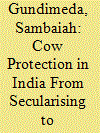

|
|
|
|
|
| Summary/Abstract |
Cow protection, a potent tool in the hands of cow vigilantes for atrocities against Muslims and Dalits, has become a heavily politicised issue in contemporary India. Its roots, connecting the themes of caste-Hindu religious sentiment, communalism and economic reasoning, can be traced to the late nineteenth century, though basic problems over the intriguingly complex use of cattle are clearly much older. This article relates contemporary cow protection debates specifically to Arya Samaj arguments against cow slaughter in the late nineteenth century and publication of a special issue of the journal Kalyan, titled Gau Ank, in 1945. The discussion shows how cow protection debates in the Constituent Assembly of India and in subsequent post-independence judicial verdicts were heavily influenced by these two earlier discourses. Analysing two landmark judicial decisions on cow slaughter, the article argues further that recent judicial endorsement of cow protection legitimises Hindu majoritarian sentiments in the law, while depriving millions of Indians, not just Muslims, of fundamental rights to food and livelihood. The conclusion attempts to consider some possible solutions to the current impasse.
|
|
|
|
|
|
|
|
|
|
|
|
|
|
|
|
| 2 |
ID:
190959
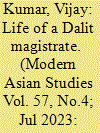

|
|
|
|
|
| Summary/Abstract |
This article discusses Chaudhari Mulkiram (April 1910–August 1954) and the contesting ideologies, memories, histories, and socio-political conditions surrounding his career from the 1920s to the mid-1950s. Mulkiram belonged to the Dhangar, a sub-caste of the Khatik caste in Meerut. He was the first Dalit of the United Provinces (UP) who qualified for the Public Service Commission in 1939. This article shows his socio-religious and socio-political relations and responses to the Arya Samaj, Congress, and Scheduled Caste Federation. It reveals how the representatives of these agencies portrayed his life and work. This article also discusses how his relations and responses helped and influenced his caste members in the western UP. It argues that the Arya Samaj, Harijan Sevak Sangh, and Congress used the first generation of Dalit civil servants like Mulkiram to cultivate local leaders and to mobilize local Dalits, peasants, labourers, and villagers to act in their political interests against Ambedkar’s movement. Hence, in the 1940s and early 1950s, Mulkiram presented himself as a Gandhi bhakt, Jan Neta (public leader), and Sanyasi (household monk and socio-religious reformer).
|
|
|
|
|
|
|
|
|
|
|
|
|
|
|
|
| 3 |
ID:
190168
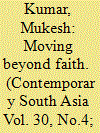

|
|
|
|
|
| Summary/Abstract |
This article historically and anthropologically examines the issue of religious conversion and identity formation among a Jogi community of religious converts. They were previously Muslims and changed their religious association to Hinduism after 1947. Individual and collective narratives of their religious conversion and the problems associated with forming a respected socio-religious identity indicate that religious conversion in South Asia is a non-linear event symbolising a complex process of becoming Hindu. The Muslim Jogis were not accepted by the Hindu Jogis after these conversions, leading to the formation of a new Jogi caste community called the Suddhi (purified) Jogis, popularly recognised in Alwar as a caste of converts. The community members still struggle to assert their Hindu identity. This article argues that converting to Hinduism may result in ‘social stasis’, signifying a ‘perpetual state of becoming’ due to the lack of complete social acceptance of converts by the traditionally recognised caste communities of ‘Hindus’.
|
|
|
|
|
|
|
|
|
|
|
|
|
|
|
|
| 4 |
ID:
098073
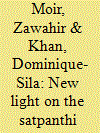

|
|
|
| 5 |
ID:
103647
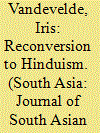

|
|
|
|
|
| Publication |
2011.
|
| Summary/Abstract |
From the broader debate on the phenomenon of conversion, it becomes clear that conversion to Christianity and Islam generates discomfort in Indian society. Moreover reconversion to Hinduism, which often goes unnoticed in this controversy, also exists. What kinds of phenomena are labelled as reconversion? What meanings do they have? Based on fieldwork and interviews, alongside analyses of media coverage and archival research, this article gives an overview of the different kinds of reconversion from the end of the nineteenth century up to the present and analyses its conceptualisation by both its critics and its promoters. From these analyses follows the conclusion that reconversion is mainly a tool to arrest Christian and Muslim conversions.
|
|
|
|
|
|
|
|
|
|
|
|
|
|
|
|
|
|
|
|
|